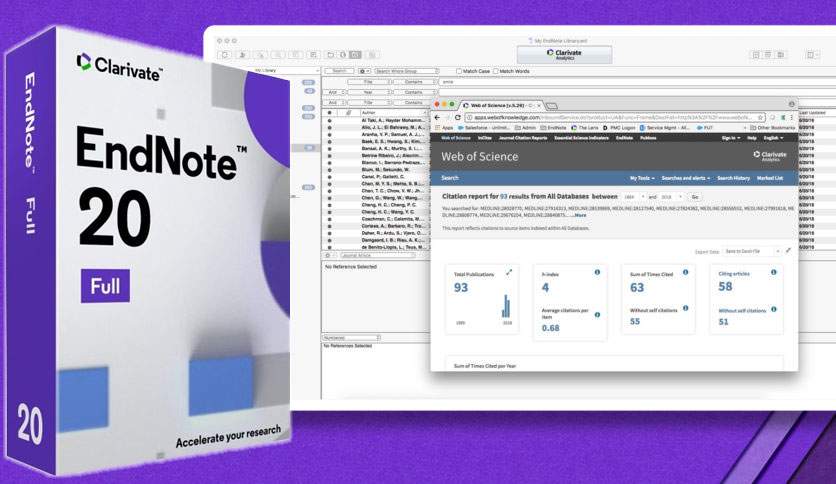In an era dominated by digital information, the process of research has never been more accessible, yet it can also be incredibly overwhelming. The sheer volume of resources available demands a powerful tool to help researchers and academics keep their references and citations organized. This is where EndNote steps in as your knight in shining armor, streamlining your research and saving you precious time. In this comprehensive user’s manual, we will guide you through every facet of EndNote, enabling you to master this indispensable tool for efficient research.
1. Introduction to EndNote
What is EndNote?
EndNote is a robust reference management software designed to assist researchers, academics, and students in organizing, citing, and formatting references and citations with remarkable ease. It acts as your personal librarian, helping you manage a vast collection of sources effortlessly.
Why should you use EndNote for research?
EndNote offers a plethora of benefits. It simplifies the research process, enabling you to store, manage, and retrieve references swiftly. Moreover, it eliminates the tedium of manual citation formatting, keeping you impeccably organized and ensuring you never misplace a source again.
2. Getting Started
Installing EndNote
The first step to harnessing the power of EndNote is to download and install the software on your computer. Select the version that corresponds with your operating system, and you’re on your way to a more organized research journey.
Setting up your EndNote library
Once EndNote is installed, it’s time to create your very own EndNote library. This digital sanctuary is where all your references and citations will be stored. The best part? You can tailor your library’s settings and appearance to suit your personal preferences.
Importing references
EndNote makes it a breeze to import references from various sources. Whether you’re collecting data from online databases, websites, or PDFs, EndNote’s import feature ensures precision and saves you valuable time.
3. Managing Your Library
Creating groups and categories
Organizing your references becomes a cinch with EndNote. You can create groups and categories to sort your sources, making it a snap to find the materials you need for specific projects or topics.
Customizing reference types
EndNote offers the flexibility to customize reference types, adapting to your specific research needs. Whether you’re working on a scientific paper, a humanities project, or anything in between, EndNote has the tools to support you.
Searching and sorting
Finding references is a breeze with EndNote’s powerful search and sort functions. No more rifling through stacks of papers – your information is at your fingertips in a matter of seconds.
4. Adding References
Manual entry
For sources that can’t be imported electronically, you can manually enter reference details into your library, creating a comprehensive overview of your sources.
Importing from databases
EndNote integrates seamlessly with various databases, streamlining the import of references directly from your research sources.
PDF auto-import
The PDF auto-import feature in EndNote automatically extracts reference information from PDFs, saving you even more time and ensuring accuracy.
5. Citing and Writing
Integrating EndNote with your word processor
EndNote’s integration with word processors such as Microsoft Word and Google Docs simplifies the citation process. You can insert citations and build bibliographies with remarkable ease, eliminating tedious manual labor.
Citing references in your paper
EndNote lets you effortlessly cite sources within your documents, ensuring your work is impeccably referenced and error-free.
Creating a bibliography
Generate bibliographies in your preferred citation style, whether it’s APA, MLA, Chicago, or any other format. EndNote takes care of the formatting, so you don’t have to.
6. Collaborative Research
Sharing libraries with colleagues
Collaborate effectively with your peers by sharing EndNote libraries. This feature facilitates group projects and research endeavors, ensuring seamless collaboration.
Collaborating on projects
EndNote simplifies collaborative research, enabling multiple contributors to work together on research papers and projects with ease.
Syncing your library to EndNote Online
By backing up your library on EndNote Online, you can access it from anywhere with an internet connection, ensuring your research is always at your fingertips.
7. Advanced Features
Using the EndNote plug-in
EndNote offers browser plug-ins for quick reference capture from the web, making your research more efficient and ensuring you never miss an important source.
Managing large libraries
As your library grows, EndNote’s features for managing extensive collections become increasingly valuable. You can navigate large databases with ease, making your research more efficient.
Handling PDFs and annotations
EndNote allows you to organize and annotate PDFs, making it easier to keep track of crucial information within your sources.

8. Troubleshooting and Tips
Common issues and solutions
This section will guide you through troubleshooting common problems and offer solutions to keep your EndNote experience hassle-free.
Keyboard shortcuts
Mastering keyboard shortcuts can significantly speed up your workflow, allowing you to navigate EndNote with greater efficiency.
Time-saving tricks
Discover time-saving tips and tricks that will make your research more efficient and your experience with EndNote even more enjoyable.
9. EndNote for Your Specific Needs
EndNote for students
Learn how EndNote can assist students in their academic endeavors, from research papers to dissertations. It’s a valuable tool for managing sources and formatting citations.
EndNote for researchers
Explore how researchers can benefit from EndNote’s powerful features in their quest for knowledge. Managing a wealth of sources is simplified, allowing researchers to focus on their work.
EndNote for academics
For academics, EndNote streamlines the research process, ensuring sources are impeccably managed and citations are accurately formatted, making the writing and publishing process more efficient.
10. Conclusion
The benefits of using EndNote
EndNote is a game-changer for anyone involved in research. It simplifies the process, saves time, and ensures your work is well-referenced and organized, leaving you more time to focus on the essence of your research.
How it can revolutionize your research
With EndNote by your side, your research will be revolutionized. You can concentrate on your research without getting lost in the labyrinth of references and citations.
FAQs
- Is EndNote compatible with both Windows and Mac?
- Yes, EndNote is available for both Windows and Mac operating systems.
- Can I access my EndNote library from multiple devices?
- Yes, by syncing your library to EndNote Online, you can access it from anywhere with an internet connection.
- What citation styles are supported by EndNote?
- EndNote supports a wide range of citation styles, including APA, MLA, Chicago, and more.
- Is EndNote suitable for collaborative research projects?
- Absolutely, EndNote offers features that make collaborative research more manageable and efficient.
- Is there a mobile app for EndNote?
- Yes, EndNote provides a mobile app, ensuring you can access your library on the go.
With EndNote, your research will become more organized, efficient, and enjoyable. Say goodbye to the hassles of manual citation formatting and the chaos of managing references – let EndNote do the heavy lifting for you.



